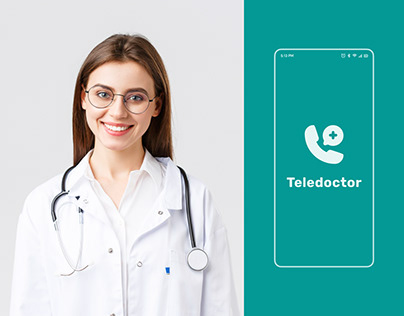Teledoctors vs Standard Healthcare: Which is Better?
Checking Out the Advantages and Challenges of Teledoctors in Modern Medical Care
As the medical care landscape progresses, teledoctors have emerged as a pivotal part in connecting gaps in clinical gain access to and effectiveness. While they offer the assurance of getting to remote areas and lowering functional costs, the trip is not without its obstacles. Privacy problems, the digital divide, and cybersecurity threats present considerable challenges that need to be addressed to harness their complete capacity. Just how can the health care industry equilibrium these benefits with the inherent difficulties? This conundrum welcomes a much deeper exploration right into the transformative role of teledoctors in forming the future of healthcare distribution.
Expanding Accessibility to Treatment
Telemedicine has become a pivotal advancement in modern-day healthcare, substantially expanding access to take care of varied populations. By leveraging digital modern technology, teledoctors have actually transformed the standard medical care delivery design, making it feasible for people in remote or underserved areas to get prompt clinical assessment. This development is specifically advantageous for individuals living in rural neighborhoods, where the deficiency of medical care facilities and specialists typically brings about postponed or insufficient treatment.
Teledoctors are crucial in connecting the space created by geographical obstacles. Via online examinations, clients can access a wide array of medical care solutions without the need for extensive traveling.
The combination of teledoctors into medical care systems likewise supports the monitoring of public health and wellness crises by promoting fast reaction and triage. Throughout pandemics, as an example, virtual consultations decrease the burden on physical medical care facilities, minimizing direct exposure risks for both people and doctor. As telemedicine remains to progress, it assures to reshape the landscape of healthcare accessibility, making it much more efficient and comprehensive.
Cost-Effectiveness of Teledoctors
The cost-effectiveness of teledoctors is a considerable variable driving their prevalent adoption in healthcare systems. By decreasing the requirement for physical facilities and in-person brows through, teledoctors offer a more cost effective choice to typical medical care delivery.
Moreover, teledoctors help with a much more effective use medical care sources by minimizing unnecessary emergency room brows through and medical facility admissions. Individuals can access timely assessments for minor conditions or follow-up treatment, which aids to relieve the worry on overstretched medical care facilities. This efficiency not just causes cost savings for doctor but additionally lowers the economic stress on clients who could or else face expensive health center costs.
Moreover, teledoctors can help in managing persistent illness more effectively by giving constant monitoring and prompt interventions. This proactive strategy can avoid difficulties, therefore lowering long-lasting therapy prices. In general, teledoctors offer a practical service to the rising costs of health care, while maintaining quality treatment delivery.
Enhancing Client Benefit
While cost-effectiveness plays a pivotal role in the increase of teledoctors, improving person convenience stands as another compelling advantage of this health care version. With the assimilation of teledoctors, patients can bypass the typically lengthy process of organizing and going to in-person consultations.
Furthermore, teledoctors offer versatile organizing, allowing individuals to prepare assessments sometimes that best fit their individual and professional dedications. This flexibility is vital for individuals balancing demanding job timetables or family obligations, ensuring that healthcare can be integrated flawlessly right into their lives. Additionally, the capability to accessibility doctor from the comfort of one's home can result in boosted person engagement and adherence to treatment plans, as the barriers to seeking care are minimized.
The comfort given by teledoctors not only enhances the client experience however likewise adds to a much more efficient and responsive healthcare shipment system, eventually sustaining much better health and wellness results.
Resolving Personal Privacy Concerns
Amid the expanding adoption of teledoctors, personal privacy concerns become a significant consideration. As healthcare increasingly depends on electronic systems, making certain the discretion of person details ends up being vital. The digitization of medical records and using telecommunication modern technologies demand robust safety and security measures to protect delicate information from unauthorized access and violations.
Doctor need to abide by stringent laws, such as the Wellness Insurance Coverage Portability and Liability Act (HIPAA) in the USA, which establishes nationwide requirements for safeguarding clinical info. Conformity with such guidelines is important in maintaining person count on and guaranteeing their data is managed sensibly. Encryption of information, protected interaction channels, and normal audits are a few of the measures that can be carried out to enhance information defense.
In spite of these measures, difficulties linger. Cybersecurity risks are evolving, and health care companies should continue to be watchful to brand-new vulnerabilities. Furthermore, enlightening both clients and medical care service providers concerning best methods in information personal privacy is vital. This consists of understanding the restrictions of electronic interaction and the significance of safe login qualifications. teledoctors.
As teledoctors end up being a lot more indispensable to medical care delivery, addressing privacy issues is important to make sure both the efficiency and reliability of these solutions.

Navigating the Digital Divide
Bridging the digital divide is a vital difficulty in the extensive fostering of teledoctors. The advantages of teledoctors-- such as raised availability and comfort-- stay unreachable for many people that might most benefit from them.
Furthermore, campaigns to subsidize modern technology for low-income homes can play a crucial function in next page making certain equitable accessibility. Healthcare suppliers and community companies need to work together to supply digital literacy programs, encouraging patients to navigate telehealth systems confidently.
Conclusion
The combination look at this website of teledoctors right into contemporary medical care provides substantial benefits, consisting of increased accessibility to care, cost-effectiveness, and enhanced individual ease. Nevertheless, obstacles such as privacy worries, the electronic divide, and cybersecurity risks have to be addressed to make best use of these advantages. By carrying out robust data defense steps, enhancing electronic literacy, and guaranteeing safe and secure technical infrastructure, the capacity of teledoctors can be completely realized, advertising equitable healthcare shipment and transforming the health care experience for all people.
